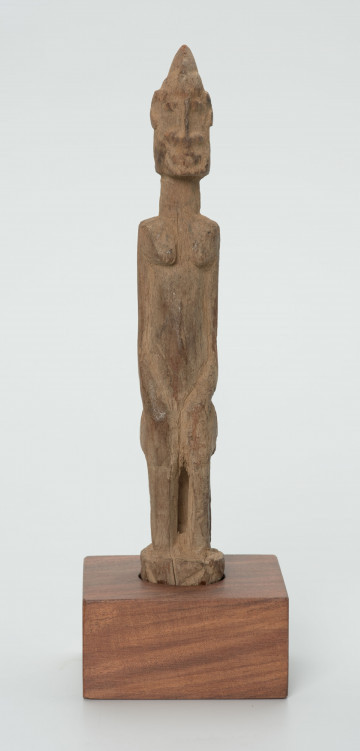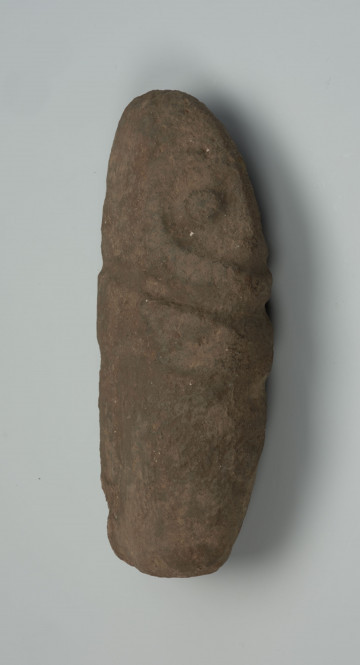
Figurine - ancestor
między 1901 — 1950
National Museum in Szczecin
Part of the collection: Collection of Dogonian art
The basis of the Dogon economy is hoe-farming. The rhythm of farmers' work is determined by the dry and rainy seasons. The rainy season lasts from the end of May to mid-October, and the dry season from November to May. The beginning of the rainy season is very important to farmers, because during this period they must start work on the fields and prepare the land for sowing. Setting a specific date is not easy. To determine that, the Dogon watch the sky, as some agricultural works are heralded by the appearance of certain stars in the sky, for example, the time of sowing is signalled by Tolo Diugo (Pleiades) visible in the sky. Some Dogon watch the moon and count down the time between each new moon. The seventh new moon after the harvest announces the time for sowing. Divination, or rather the answers received during divination, also has a great influence on the start of fieldwork. Some Dogon believe that the time of the beginning of various agricultural activities is most accurately determined by the jackal (a pale fox), which leaves its mark on fortune-telling tablets drawn and laid out on the outskirts of villages. Watching the sky and being able to read the signs is very important because sowing seed too soon and delaying the first rain (anan polo) can lead to crop failure and famine. The same is true of the prolonged rainy season. The prolonged so-called last rains (anan danon) can expose the Dogon to serious losses, because the grains harvested in October must be well dried before they reach the granaries. The inhabitants of the Bandiagara Escarpment dry all their crops on the terraces of their houses as this is the best place separated from most animals. Unfortunately, it is in no way protected from the rain.
Ewa Prądzyńska
Author / creator
Dimensions
cały obiekt: height: 26,5 cm, width: 6 cm
Object type
figure
Creation time / dating
Creation / finding place
Identification number
Location / status

między 1901 — 1950
National Museum in Szczecin

między 1951 — 2000
National Museum in Szczecin

między 1951 — 2000
National Museum in Szczecin
DISCOVER this TOPIC
National Museum in Lublin
DISCOVER this PATH
Educational path